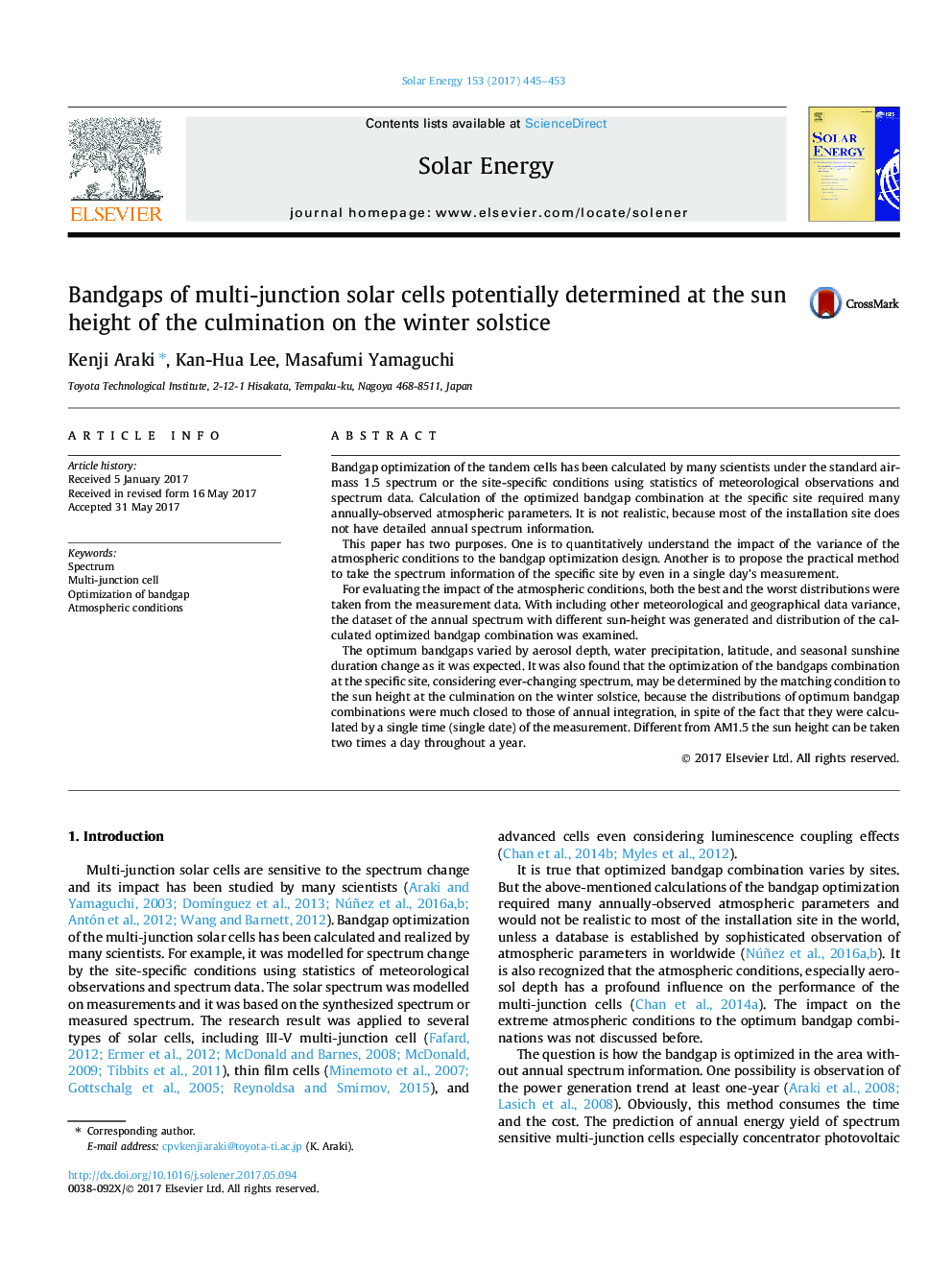| Article ID | Journal | Published Year | Pages | File Type |
|---|---|---|---|---|
| 5450735 | Solar Energy | 2017 | 9 Pages |
Abstract
The optimum bandgaps varied by aerosol depth, water precipitation, latitude, and seasonal sunshine duration change as it was expected. It was also found that the optimization of the bandgaps combination at the specific site, considering ever-changing spectrum, may be determined by the matching condition to the sun height at the culmination on the winter solstice, because the distributions of optimum bandgap combinations were much closed to those of annual integration, in spite of the fact that they were calculated by a single time (single date) of the measurement. Different from AM1.5 the sun height can be taken two times a day throughout a year.
Keywords
Related Topics
Physical Sciences and Engineering
Energy
Renewable Energy, Sustainability and the Environment
Authors
Kenji Araki, Kan-Hua Lee, Masafumi Yamaguchi,
